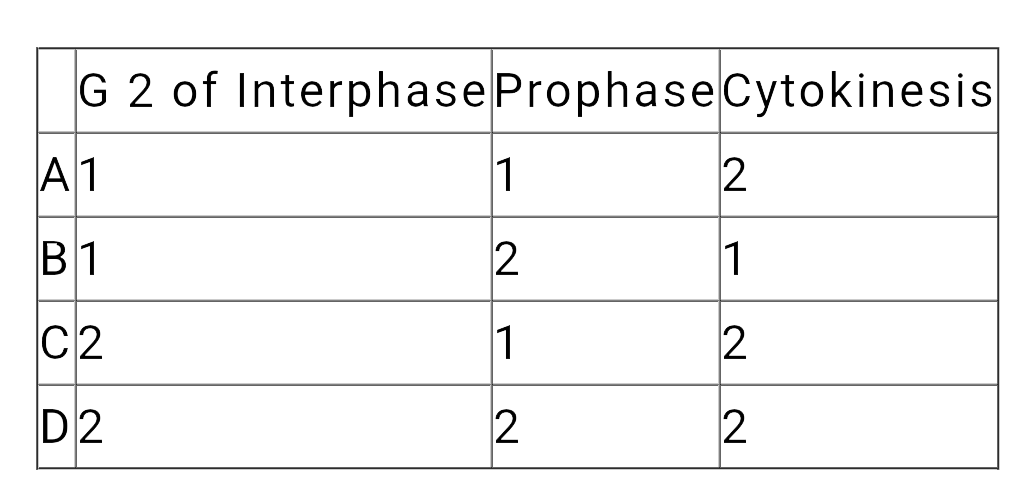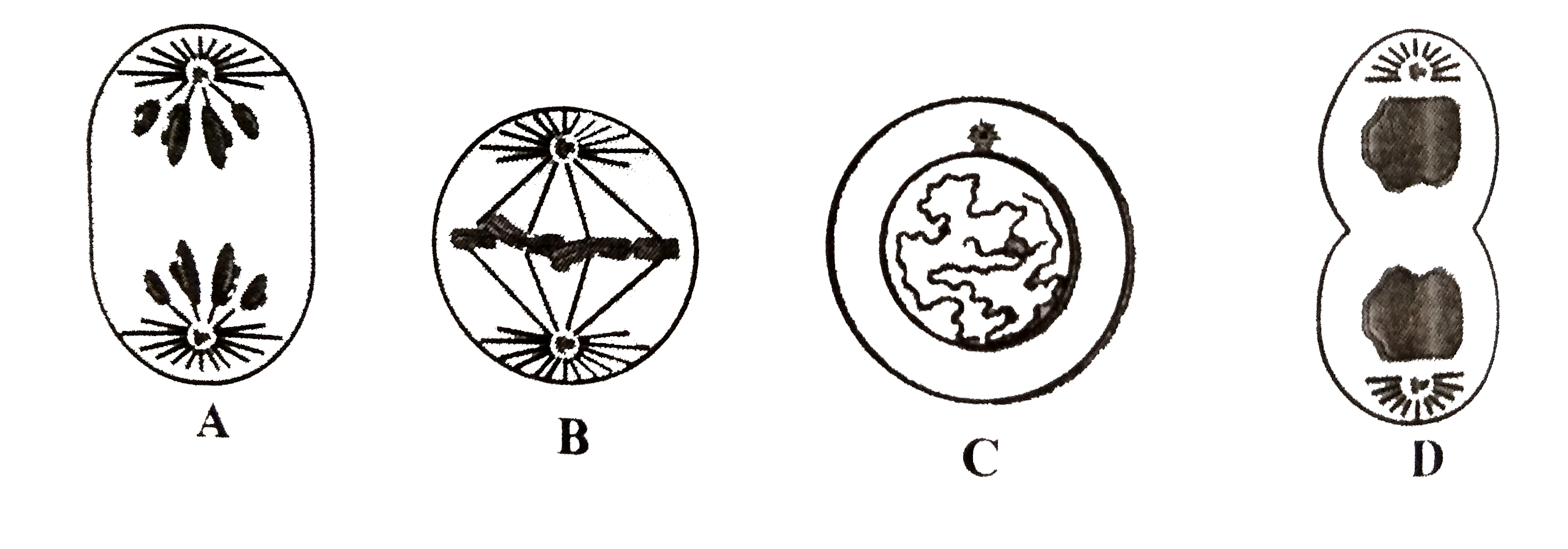At the beginning of the final stage of mitosis,
The chromosomes that have reached their respective poles decondense .
Nuclear envelope assembles around the chromosome clusters .
Chromosomes cluster at opposite spindle poles and their identity is lost as discrete elements .
Nucleolus , golgi complex and ER reform .
The correct Answer is:A
To solve the question regarding the events at the beginning of the final stage of mitosis, we will analyze each option provided in the context of the telophase stage of mitosis.
1. Understanding Mitosis Stages: Mitosis consists of several stages: prophase, metaphase, anaphase, and telophase. The question specifically asks about the final stage, which is telophase.
2. Identifying Telophase Events: During telophase, the following key events occur:
- Chromosomes that have been separated during anaphase reach the opposite poles of the cell.
- The nuclear envelope begins to reform around each set of chromosomes.
- Chromosomes start to decondense back into chromatin.
- The nucleolus and other organelles, such as the Golgi apparatus and endoplasmic reticulum, begin to reform.
3. Analyzing Each Option:
- Option A: "The chromosomes that have reached their respective poles can decondense."
- This is true. In telophase, chromosomes decondense after reaching the poles.
- Option B: "Nuclear envelope assembles around the chromosome clusters."
- This occurs during telophase but is not the primary event at the very beginning.
- Option C: "Chromosome clusters at opposite spindle poles and their identity is lost as discrete elements."
- This describes metaphase, not telophase.
- Option D: "Nucleolus, Golgi complex, and endoplasmic reticulum reform."
- This occurs after telophase, during cytokinesis.
4. Conclusion: The correct answer is Option A: "The chromosomes that have reached their respective poles can decondense." This accurately describes an event that occurs at the beginning of telophase.
Final Answer:
Option A: The chromosomes that have reached their respective poles can decondense.
- Chromosomes that have been separated during anaphase reach the opposite poles of the cell.
- The nuclear envelope begins to reform around each set of chromosomes.
- Chromosomes start to decondense back into chromatin.
- The nucleolus and other organelles, such as the Golgi apparatus and endoplasmic reticulum, begin to reform.
- Option A: "The chromosomes that have reached their respective poles can decondense."
- This is true. In telophase, chromosomes decondense after reaching the poles.
- Option B: "Nuclear envelope assembles around the chromosome clusters."
- This occurs during telophase but is not the primary event at the very beginning.
- Option C: "Chromosome clusters at opposite spindle poles and their identity is lost as discrete elements."
- This describes metaphase, not telophase.
- Option D: "Nucleolus, Golgi complex, and endoplasmic reticulum reform."
- This occurs after telophase, during cytokinesis.
Option A: The chromosomes that have reached their respective poles can decondense.
Similar Questions
Knowledge Check
Which of the following is not a stage of mitosis?
AAnaphaseBMetaphaseCInterphaseDProphaseAssertion: Prophase is the first stage of mitosis which follows S and G1 phases of interphase.
Reason: Prophase is marked by the intiation of clusters of chromocomes.AIf both assertion and reason are true and reason is the correct explantion of assertionBIf both assertion and reason are true but reason is not the correct explnantion of assertion.CIf assertion is true but reason is false.DIf both assertion and reason are false.
How many copies of each different DNA molecule will be found in a cell at the beginning of each of these stages of the mitotic cell cycle ?

View SolutionMitosis is
View SolutionIn telophase of mitosis
View SolutionThe beginning of which stage of prophase is marked by complete terminalisation of chiasmata and inhibition of RNA synthesis ?
View SolutionThe shortest stage of mitosis.
View SolutionRefer to the given figures and answer

Identify the given stages of mitosis and select the correct option
View Solution
